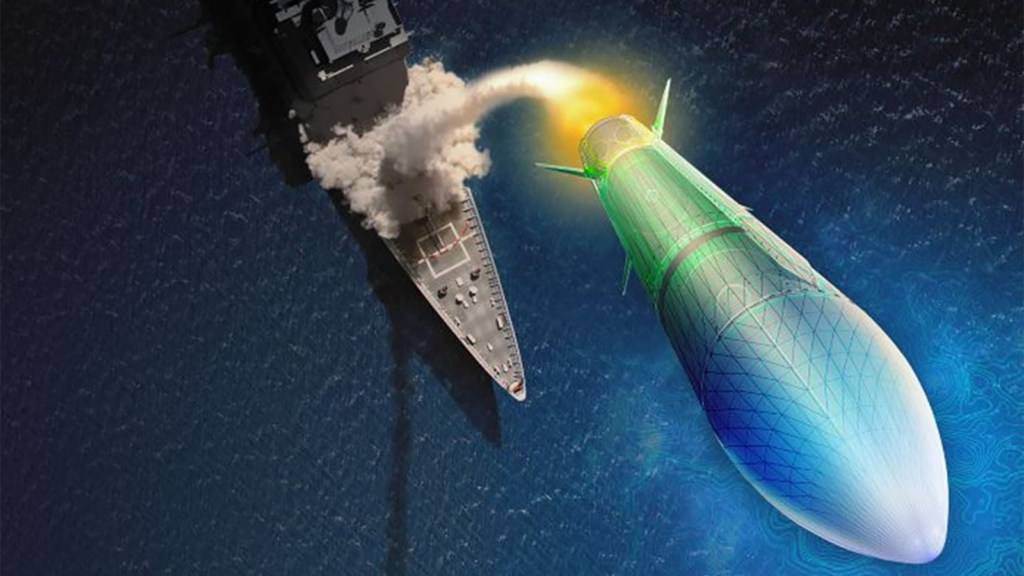
WASHINGTON — The Missile Defense Agency is gearing up for its first major test of new space-based sensors designed to track hypersonic missiles — while also studying how to beef up capacity to shoot them down in the gap between now and 2035 when the new Glide Phase Interceptor is expected to be fully functional, according to the agency’s director.
In addition, MDA is eagerly awaiting a new charter to bolster the agency’s decision-making powers expected sometime this summer, Lt. Gen. Heath Collins told the Center for Strategic and International Studies in a wide-ranging interview today.
MDA is the Defense Department’s executive agent for hypersonic defense, and is racing to get ahead of the threats posed by Russian and Chinese development efforts.
Tracking hypersonic missiles from space is required to give more time for interceptors to lock on — with current ground- and ship-based radar only able to see them just as they swoop in for kill, Collins said.
“On the hypersonic side, the big challenge is as we’re looking up to the sky for [a] ballistic missile, that hypersonic missile has turned over and come back into the atmosphere, and we see it so late in the fight, going so fast, it’s a really really small shot window. And so instead of being down looking up to find a hypersonic, you really want to be high looking down to track hypersonics,” he said.
Further, Collins said that coupling space- and terrestrial-based sensors will not just make it easier to detect and track hypersonic missiles but also “to be able to discriminate them well so that when we go to intercept we increase our likelihood of hitting the lethal object, not some some type of decoy or whatnot.”
The agency launched two satellites carrying Hypersonic and Ballistic Tracking Space Sensor (HBTSS) medium-field-of-view cameras on Feb. 14, alongside Space Development Agency wide field-of-view infrared sensors carried by four Tranche 0 test satellites for that agency’s planned Tracking Layer constellation.
“We’re getting ready for our first hypersonic testbed calibration flight within a week, where we are going to take a hypersonic testbed target and launch that and for the first time, have both of those sensors tracking and looking to see how they’re doing and how they could potentially close the fire control loop,” Collins said.
“That’ll be the first, there’ll be another testbed launch later this year,” he added.
The tests “are key steps in our ability to prove out that we can close a hypersonic fire control loop from space,” Collins said. “And we are in lockstep working this with the Space Development Agency, and they are already planning HBTSS-like sensors in their future tranches of the Proliferated Warfighter Space Architecture to start fill out that truly global hypersonic kill chain.”
The Road to GPI
On the interceptor side, Collins said MDA is bearing down on finding alternative near-term capabilities as it works to develop the GPI as fast as possible — with Congress breathing down the agency’s neck to speed the new interceptor’s field readiness.
The fiscal 2024 National Defense Authorization Act pushed MDA to ensure initial operational capability for GPI by the end of 2029 and full operational capability by 2032, as well as to deliver at least 24 GPIs by 2040. But MDA has consistently said GPI is aimed at countering threats beyond 2035, and Collins told the Senate Armed Services strategic forces subcommittee on May 8 that achieving the 2029 goal would be “very hard” and entail serious risks.
“I think in two lanes,” he told CSIS today. “One: ‘What is this the safest most reliable way to increase or accelerate GPI but still make it a fundamentally viable program?’ You know, I could claim that we’re going to do it in ’28 and skip all the testing. And then I would be a case study in acquisition school.”
Collins stressed that while he “absolutely” wants to figure out the answer to that question, he also is interested in finding innovative solutions in the near-term.
“I also want to see what else we could bring to bear so that between now and then we’re better protected, wherever we may be. Hypersonic weapons are being used today. And the inventories of our threats are increasing in the years to come,” he said.
Collins admitted that MDA still has “a lot of work to do” to get a grip on that puzzle.
“We do need to sharpen our pencils. And we’re beginning to to take a look at where else in the system, on the interceptor side, where else in the system could we bring something to bear? Whether it’s something within the missile defense system of today, or maybe it’s something not in the missile defense system of today?” he said.
“We’ve been tasked to think creatively bring capability sooner: ’29, ’30. And that is really going to take maybe some different style of thinking than a traditional start with its certainty,” Collins added. “What we’ve got to figure out: ‘it’s most likely going to be a weapon that already exists today — what can we do to get the most out of it?”
New Charter, Renewed Powers?
Meanwhile, DoD is in the process of reviewing MDA’s charter, Collins told CSIS.
The original 2002 charter was altered by the Trump administration in 2020 under an executive order [PDF], transferring the authority to determine whether major programs have passed developmental milestones and proceed ahead from the MDA director to the Office of the Undersecretary of Defense for Acquisition and Sustainment.
“In 2002, the Department of Defense (DOD) provided the Missile Defense Agency (MDA) with flexibilities to diverge from traditional requirements-setting and acquisition processes and instead implement a unique approach to managing its acquisitions. After completing studies in 2019, DOD revised those flexibilities in 2020 by making significant changes to MDA’s requirements-setting and acquisition processes,” explained a 2021 report [PDF] by the Governmental Accountability Office.

Collins said that the DoD review is still being chopped, but that he expects the result will be an increase in his authorities.
“The charter is continuing to go through the magical coordination and staffing process within the Pentagon,” he said. “It is close to finalization to move that out. And while not going back to the original charter level of authority, there is a significant amount of authority that is going to be institutionalized within that new MDA charter as it as it wraps up this summer.”

